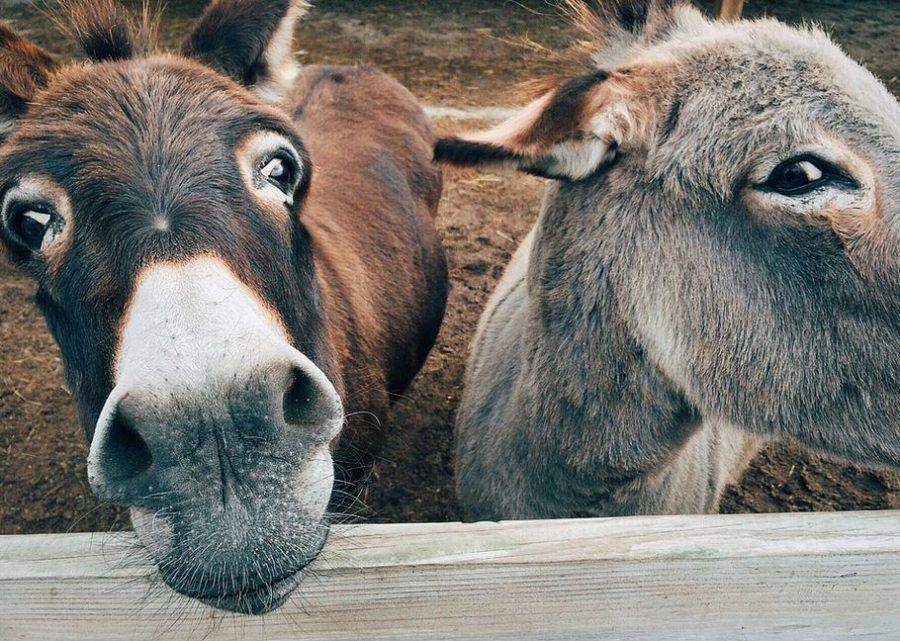Butch, the local farrier came out to the farm about every 6 weeks to trim hooves and was very pleased that Luke, Lillie, and later, Sophie, were very docile and friendly. Character traits that most donkeys do not have. Butch also provided much-needed and appreciated animal husbandry advise.
Shortly after acquiring Luke and Lillie, we hired Ted, a local well-digger, to come out to the farm and install a yard hydrant close to the barn. It was during Spring Break and Ted’s two sons did a great job trenching in the piping and installing the hydrant. The next morning, when I went to the barn for the morning feeding, I noticed a rather large wet spot on the ground right above the spot where the water piping made a 90 degree turn to the hydrant. Ted returned later that day with his sons and as they were digging down to the piping, the aroma of sulfur permeated the air around us. The piping was intact and it seemed that the donkeys decided to relieve themselves over the freshly overturned earth! Who knew they would do this?
Although the donkeys grazed on the grass in the two pastures we had, it was necessary for mowing to take place. Of course, the donkeys helped! Chasing the mower, licking it when it was idling. They also helped with some of our chores in the pasture like fence mending. Ah, the water hydrant. I came out to the barn one day and the water hydrant was on and had been for some time. Seems one of the donkeys learned how to lift the handle and watch the water flow! From then on, we used a bolt and wing-nut to secure the handle.
Unlike rhinoceroses found in zoos or in their native habitats, equines do not deposit their manure in one place all the time. Each donkey produces about one ton of manure each year. These droppings are collected on a regular basis for the safety and well-being of the animals, especially if their pastures or holding areas are small in size. We had 2 one-acre pastures and they used one stall in our barn. And so we developed a manure retrieval system. Using a special long-tined rake the droppings were gathered and deposited them into a ‘manure spreader.’ The manure spreader was purchased as a Christmas Gift, much to the delight of the owner of the local farm supply store who sold us the spreader at a fair price [the price that was offered at the county fair] and the only piece of farm equipment that the manufacturer would not stand behind [the spreader flicks the manure to the rear]. It is good to note that we had the greenest grass on the two acres behind our home that anyone ever saw! With a 540 John Deere mower, we could mow and spread at the same time!























